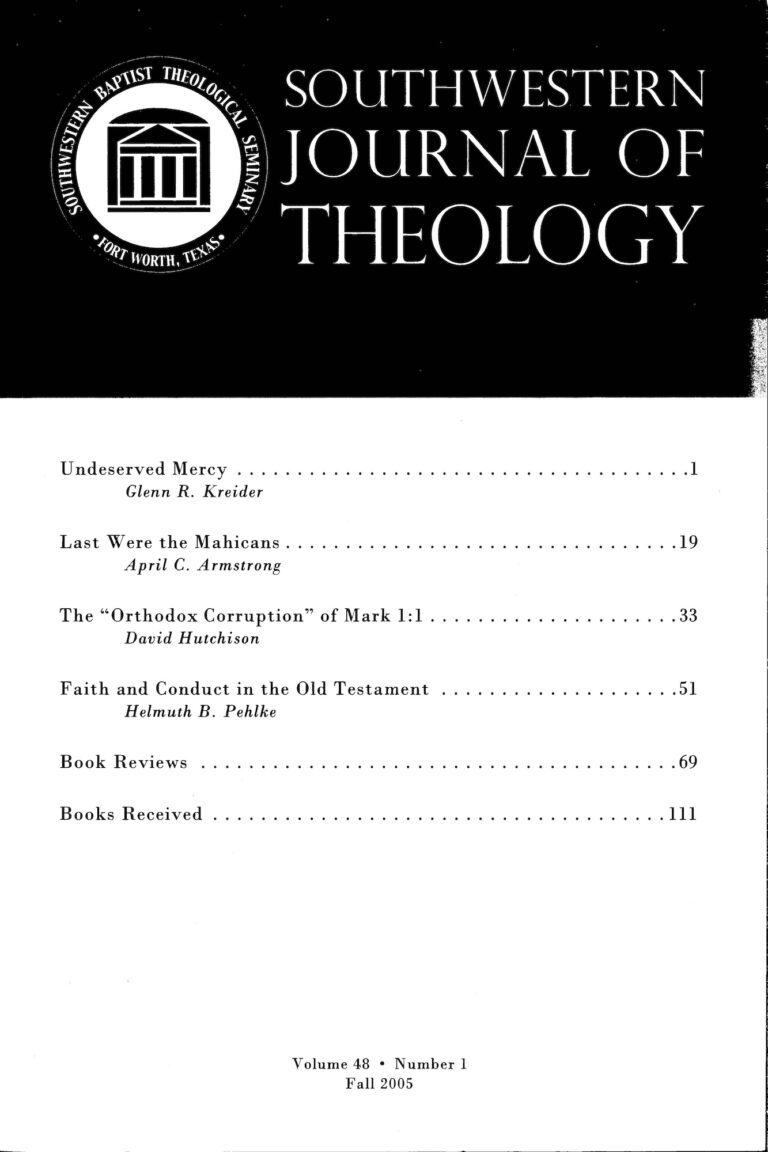
Southwestern Journal of Theology (48.1)
Southwestern Journal of Theology
Volume 48, No. 1 - Fall 2005
Editor: Paige Patterson
By John Barton and Julia Bowden. Grand Rapids: Eerdmans, 2004· 334 pages. Softcover, $20.00.
“All features considered, The Original Story is one of the best guidebooks to the Hebrew Bible now available.” That is the quote offered by the publishers of this survey Old Testament. Unfortunately, that praise is hyperbolic.
The book is written for beginning students and does have some helpful components. Sidebars, pictures, and illustrations are abundant and the glossary is helpful for anyone new to the study of the Old Testament.
However, at times, the authors seem to struggle with the attempt to write to an elementary audience about complex topics. The book is marked by simple vocabulary and colloquialisms (with words like “dogged,” “fuzzy,” “gloomy,” “tussled,” “scrappy,” and “peters out”), reading like it was written by someone with more training in education than in theology. The authors do not interact with many noted Old Testament scholars, especially those who hold differing views. Often they approach difficulties with a bias that leaves little room for belief in the absolute truth of the text, and in fact, they seem to discount the possibility. Sadly, this reference gives impressionable students license to make sweeping theological assumptions without proof and without considering evidence to the contrary.
By far, the most common ingredients in the text are the statements questioning the accuracy of the Bible. The authors question the authorship of the Pentateuch (40, 44, 60, 82), Job (74), Psalms (33), Proverbs (32), and Isaiah (44, 192-96) in general; and Genesis 1-11 (122), Adam and Eve (121-22), the stories of Noah (61, 121-22), Abraham (61), Moses and the ten commandments (86), David and Goliath (121-22), Jonah (119), and Daniel (121-22) in particular. In fact, the further you read in the text the more you discover how little of the Bible the authors actually believe. They question creation in favor of science (49-50), claim that an attempt to date the ten commandments to the time of Moses is “a deliberate attempt to gain status for them” (86), express their opinion that it is “highly doubtful” that David and Solomon ever reigned over an empire (133), advocate that the people of Israel did not go into exile (145), question the truthfulness of the decree of Cyrus (157), equate prophetic visions to “hallucinations,” (195), and compare believing that God actually spoke to the serpent to believing in Santa Claus (121).
Ironically, one of the most cogent criticisms of this work is raised by the authors themselves. They acknowledge that one of the most difficult questions to answer for a minimalist is the question of the degree of accuracy of the text (121-22). Who determines which parts of scripture are true and which are not? In the end, the question remains unanswered for them. Their final conclusion to the question of the formation of scripture is “we can never be certain we got it right” (300).
In the end, the publishers did get one point right. This book is “very readable.” Unfortunately, anyone interested in a survey of the Old Testament that affirms the supernatural origin and inerrant nature of scripture won’t like what he or she read.





